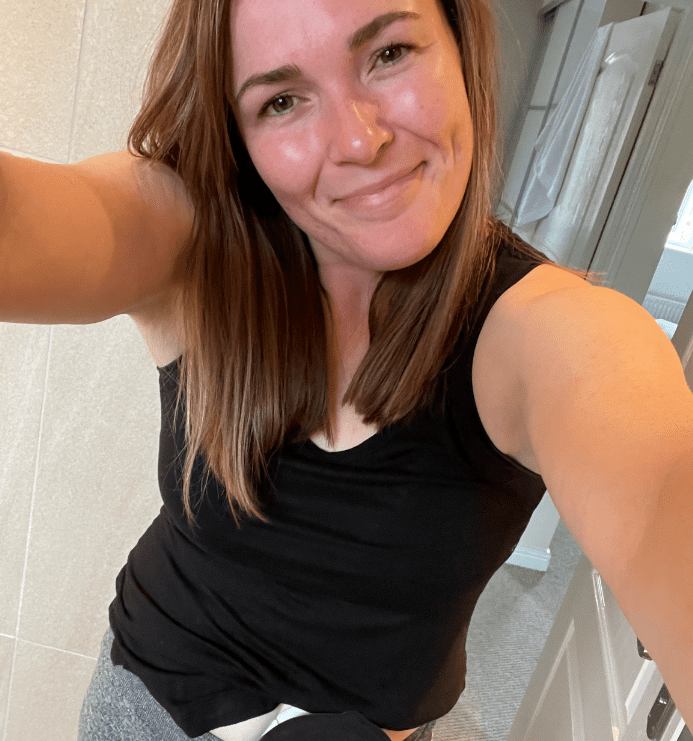Postpartum survival with a stoma
As I type this blog, I am sitting in Intensive Care with a beautiful new baby boy that unfortunately has tested positive for the genetic disorder Hirschsprungs Disease. The disease is shared by myself, my eldest son and now the baby, which as you can imagine has been pretty devastating news for all to process since the day he was born.
Aside from the diagnosis, after birth comes its own challenges which as a new mother, and already being a mother to one, has taken a steep learning curve to wrap my head around. It is day 11 post birth and quite frankly, I haven’t got a grip of them all yet. What I will share is what I have been doing and hope it can help others in the same position.
1. Medication
When you have medication for yourself and others in the household its a nightmare chasing prescriptions and queuing at the pharmacy to then be told they haven’t come in. You all know the drill… With a c section planned and knowing the baby would be staying in hospital for a while, I rang my GP and asked if I could have a few months of medication to tide us over rather than worrying about the logistics of prescriptions and the back and forth. It is not certain that every GP will do this, but I have been lucky enough for mine to be sympathetic and agree to my request.
2. Hydration
It is so easy to let life get in the way of keeping hydrated when huge life moments take over. It sounds so ridiculous even typing this, as it is as simple as remembering to drink, but I am terrible at staying on top of it. If you plan on breastfeeding or can’t due to the baby being poorly and have to express, keeping hydrated is one of the most important things a midwife will tell you to do. That’s before you add a stoma into the mix. I had lots of headaches to start with where I couldn’t keep on top of my hydration being in intensive care and the worry of it all. You simply don’t think about yourself. My partner kept reminding me which helped and I drank drinks with electrolytes in. Having a drink to hand while expressing and monitoring how much with a bottle with amounts on the side is also a good shout.
3. Bonding with baby
In a medical environment and with cannulas and tubes to contend with, it can be scary trying to hold and build a bond with your new baby. The nurses will be on hand, and are very experienced in supporting parents and carers in this. Skin on skin is promoted to help bonding, and as long as it is safe to do so, even with multiple lines to contend with it is still possible. At first it is normal to worry if you will hurt them, cause something to move or disrupt a line. When you push past that fear and get those cuddles and look into your baby’s eyes, it will give you the serotonin boost you need and comfort of knowing you are close.
4. Adapting to a new environment
If you are living in accommodation at a hospital while your child is a patient, on one hand it’s brilliant being able to stay close, but on the other hand it’s still difficult being away from home and what you know. In a hospital environment you can lose track of what day and time it is easily, and lose sight of the importance of looking after yourself. Establish a routine and look after yourself by eating regularly, showering, having down time, and getting fresh air.
5. Family and friends
It can be draining receiving messages from family and friends during a really rubbish time when they are asking if there is any news or progress, with nothing positive to be able to say back. They can find it uncomfortable knowing what to say back, and to avoid upsetting anyone you may want to put on a brave face and try and be cheery when deep down you just want to cry and sleep until it is all over.
When important updates are given I always suggest doing a message in your notes on your phone that can be sent to those that need to know. A friend or family member could take on the role of letting people know information should you not have the mental space to contact people. It can feel like a very dark time, and putting more pressure on yourself than you have to give to people isn’t your responsibility. Give what you can and what you feel comfortable with. True supporters will understand. As weeks go on, you will hear less and less from people as lives move on, don’t take this personally as you are still going through your hard time. Make sure to reach out when you need to talk to someone, and if you feel unwell or that you need medicinal support make an appointment with your GP.
6. Siblings
Having a new sibling is such an exciting time, but when they can’t come straight home, it can be a confusing and upsetting time for those who are waiting at home. We are lucky that the hospital provided a sibling pack for my eldest with activities to do. This included creating art work, a sign for the baby’s incubator, a portrait to introduce the baby to the family, and challenges they could do to help bonding such as reading a story during visiting times. A certificate was given when challenges were achieved which little man was very happy to receive.
With visiting times extremely limited in intensive care making the opportunities for bonding minimal, video calls and sharing photos have been used. With a baby not home it can feel like they haven’t got their new sibling yet, and that’s completely normal. They may find it scary seeing the baby in the intensive care environment, or if they have received medical intervention themselves, find it triggering. Be guided by what the child wants to do in terms of visiting and go with the flow, as hard as it can be as a parent and carer that just wants the family all together. Keep focused on the end goal of one day being back home all together and the memories you will create as a family.

Meet the blogger: Rachel
Rachel is a part time baker and healthcare blogger who started raising awareness of stoma surgery following the birth of her son Jake. Jake was born with the same condition as Rachel, Hirschsprungs Disease. The disease affects 1 in 10,000 births in the UK every year, where the ganglion cells…







